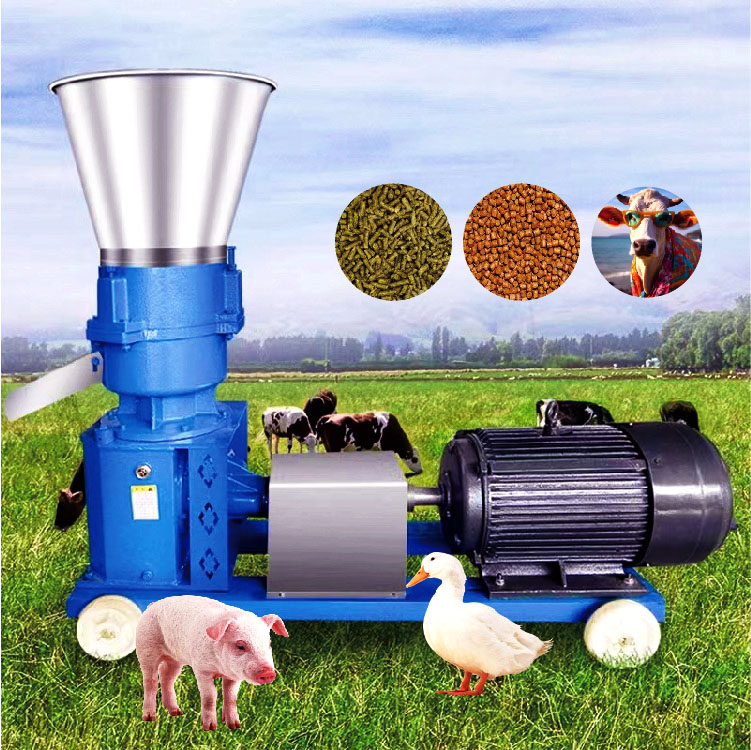Optimizing Performance of Manual Feed Mixing Equipment for Livestock Nutrition
Oct . 10, 2024 22:24 Back to list
Optimizing Performance of Manual Feed Mixing Equipment for Livestock Nutrition
Manual Feed Mixer A Comprehensive Overview
In the world of agriculture, ensuring that livestock receive a balanced and nutritious diet is paramount for optimal growth and productivity. One of the essential tools in achieving this is the feed mixer. While there are several types of feed mixers available in the market, the manual feed mixer has remained a popular choice due to its simplicity, cost-effectiveness, and versatility. In this article, we will explore the features, benefits, and applications of manual feed mixers.
What is a Manual Feed Mixer?
A manual feed mixer is a piece of equipment designed to combine various ingredients into a homogeneous feed mixture for livestock. Unlike its automated counterparts, manual feed mixers rely on human labor to operate. They typically consist of a mixing chamber, a feed inlet, and an outlet for dispensing the finished product. The mixer may also include paddles or blades that facilitate the blending of materials.
Features of Manual Feed Mixers
1. Simplicity The design of a manual feed mixer is straightforward, making it easy to operate even for individuals with limited technical skills. This is particularly advantageous for small-scale farmers who may not have access to advanced machinery.
2. Portability Many manual feed mixers are lightweight and compact, making them easy to transport around a farm. This allows farmers to mix feed on-site, ensuring freshness and reducing the likelihood of spoilage.
3. Customization Farmers can easily adjust the proportions of different ingredients based on the specific nutritional requirements of their livestock. This level of customization is essential for optimizing animal health and productivity.
4. Durability Manual feed mixers are often constructed from durable materials, ensuring a long lifespan with minimal maintenance. This durability is crucial for farmers who rely on their equipment for daily operations.
Benefits of Using Manual Feed Mixers
manual feed mixer

1. Cost-Effective Manual feed mixers are generally less expensive than automated mixers, making them an attractive option for small farms or those operating on a tight budget. The lower initial investment also means that farmers can allocate resources to other essential areas of their business.
2. Control Over Ingredients With a manual mixer, farmers have complete control over the ingredients they use in their feed. This not only allows for the incorporation of local ingredients but also helps in avoiding unwanted additives or fillers that may be present in commercial feeds.
3. Lower Energy Consumption Manual feed mixers do not require electricity or fuel, contributing to lower operational costs. This is especially beneficial for farmers in remote areas where access to power sources can be limited.
4. Environmental Impact By mixing their own feed, farmers can adopt sustainable practices by utilizing local ingredients and reducing reliance on packaged feeds that may have a larger carbon footprint due to transportation.
Applications of Manual Feed Mixers
Manual feed mixers are versatile and can be used across a range of agricultural settings. They are primarily used in small to medium-sized farms for mixing feed for various livestock, including cattle, poultry, pigs, and goats. Additionally, these mixers can be employed in urban farming operations where space and resources are limited.
Moreover, manual feed mixers are valuable tools for animal husbandry enthusiasts and hobby farmers. They provide a way to ensure that the animals are receiving high-quality, nutritious feed tailored to their specific needs.
Conclusion
In summary, manual feed mixers play a crucial role in modern agriculture, particularly for small and medium-sized farms looking to maintain control over their livestock's nutrition in a cost-effective manner. Their simplicity, portability, and customization options make them an invaluable tool for farmers who prioritize both quality and sustainability. As the agricultural landscape continues to evolve, manual feed mixers will remain an important asset in promoting better feeding practices and enhancing livestock productivity. By investing in such equipment, farmers can ensure healthier animals, higher yields, and ultimately, a more successful farming operation.
-
Hot Sale 24 & 18 Door Rabbit Cages - Premium Breeding Solutions
NewsJul.25,2025
-
Automatic Feeding Line System Pan Feeder Nipple Drinker - Anping County Yize Metal Products Co., Ltd.
NewsJul.21,2025
-
Automatic Feeding Line System Pan Feeder Nipple Drinker - Anping County Yize Metal Products Co., Ltd.
NewsJul.21,2025
-
Automatic Feeding Line System - Anping Yize | Precision & Nipple
NewsJul.21,2025
-
Automatic Feeding Line System - Anping Yize | Precision & Nipple
NewsJul.21,2025
-
Automatic Feeding Line System-Anping County Yize Metal Products Co., Ltd.|Efficient Feed Distribution&Customized Animal Farming Solutions
NewsJul.21,2025






